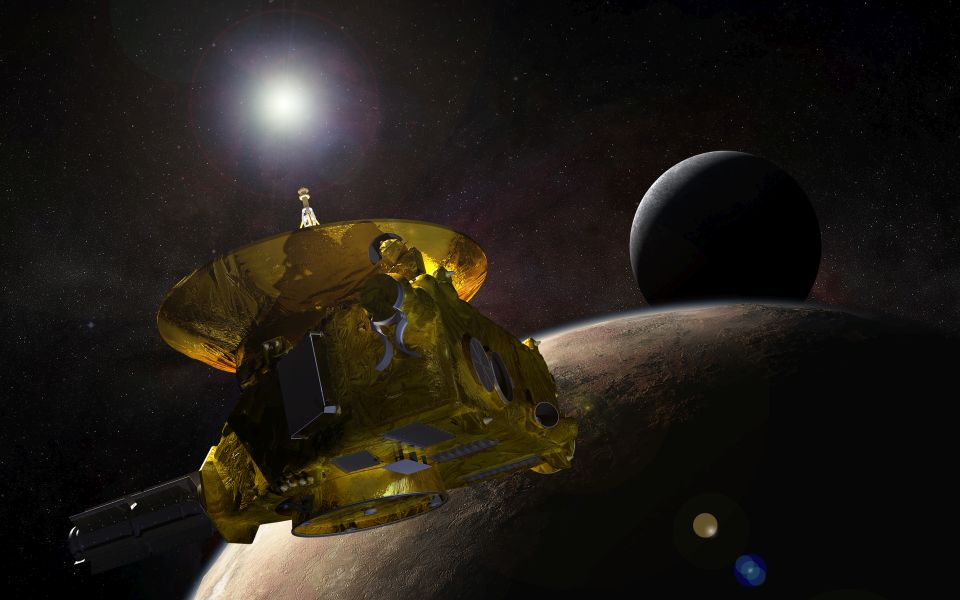
When a Kansan farmboy-turned-astronomer named Clyde Tombaugh discovered Pluto in February 1930, he must have yearned to someday learn more about the mysterious, far-off world, and perhaps send a robotic mission to explore it at close-range. So too must Venetia Burney, who came up with the name for the tiny planet as an 11-year-old schoolgirl in Oxford, England, and so too must U.S. astronomer James Christy, whose telescopic observations of Pluto’s orbit turned up its large binary companion, Charon, in mid-1978. In the second decade of the 21st century, we are fortunate to be alive at a time when Pluto—the last of the Solar System’s nine traditional planets to be explored—will finally bare some of her secrets to an Earthly machine, but New Horizons follows a series of “almost” missions to the diminutive world, on the ragged outermost edge of the Sun’s realm, which never bore fruit. Over the coming days and weeks, AmericaSpace’s New Horizons Tracker and a series of articles by Mike Killian, Leonidas Papadopoulos, and myself will cover the discovery and exploration of Pluto to date, the trials and troubles faced by those who desired to send a spacecraft there, and the unfolding developments as New Horizons seeks to make this unknown world known.
The desire to send a spacecraft to Pluto—whose highly elliptical orbit carries it out of the ecliptic plane and ranges as close as 30 Astronomical Units (2.7 billion miles of 4.4 billion km) and as far as 49 AU (4.6 billion miles or 7.4 billion km) from the Sun—is rooted not just in our species’ innate curiosity about this far-off world, but in the very real practicalities of celestial mechanics. Since a stellar occultation in August 1985, observed by astronomers Noah Brosch and Haim Mendelson of the Wise Observatory in Israel, there existed a possibility that Pluto possessed a tenuous atmosphere. This was confirmed in 1988 by the Kuiper Airborne Observatory (KAO), an infrared astronomy payload carried to altitude aboard a modified Lockheed C-141A Starlifter jet aircraft, which discerned a very thin gaseous envelope, about 700,000 times less dense than that which girdles our Home Planet. Subsequent spectroscopic analyses verified the presence of ices of 98 percent nitrogen and smaller traces of methane and carbon monoxide, which carried the potential to sublimate directly to gas and produce a steadily thickening atmosphere during the dwarf planet’s closest passage to the Sun, then freeze as Pluto continued its 248-Earth-year journey into the darker, colder reaches of the Solar System.
From February 1979 through February 1999, Pluto’s long orbital path carried it interior of the orbit of Neptune—making it temporarily the eighth traditional “planet” in terms of distance from the Sun—and, indeed, from October 1988 it was observed that during this closest approach to its parent star its atmosphere did indeed begin to thicken. However, in the spring of 1999, Pluto began its outward journey and re-claimed its status as the outermost planet, causing astronomers to suspect that its atmosphere would steadily begin cooling. In the summer and fall of 2002, investigators utilized four major Earth-based observatories at Mauna Kea, Haleakala, Lick, Lowell, and Mount Palomar, located in Hawaii and California, revealed that the average surface temperature of nitrogen ice on the Plutonian surface had slightly increased over 14 years. This was likely due to the sublimation of the nitrogen directly to a gaseous state and coupled with greater heat absorption from the Sun, which effectively pumped-up Pluto’s atmospheric pressure. It was noted that the lengthy warming trend was not unexpected. “It takes time for materials to warm up and cool off,” explained Dr. David Tholen of the University of Hawaii, “which is why the hottest part of the day on Earth is usually around 2 or 3 p.m., rather than local noon, when sunlight is the most intense.” He added that Pluto’s 248-Earth-year orbit of the Sun meant that a mere 13 years represented a tiny period of time on the dwarf planet. “This warming trend on Pluto could easily last for another 13 years,” he said.
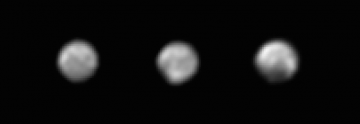
Certainly, Neptune’s moon Triton was revealed via spectroscopic analysis to have distinctly warmed in the 1997 timeframe, and in view of their distance from the Sun it was not unreasonable to suppose that similar changes were also occurring on Pluto. However, it was noted that whereas the changes on Triton were relatively subtle, the nature of Pluto’s orbit—coupled with the Uranus-like tilt of its rotational axis very close to the ecliptic—was expected to produce far more dramatic consequences, particularly with regard to seasonal changes and even manifestations of weather and winds. It was also recognized that as Pluto drew farther from the Sun, after 1999, the possibility of its atmosphere freezing and producing “atmospheric collapse” during the 2010-2020 timeframe would preclude detailed observations of the planet. “This is a very complex process and we just don’t know what is causing these effects on Pluto’s surface,” explained planetary scientist Prof. Jim Elliot of Massachusetts Institute of Technology (MIT). “That’s why you need to send a mission.”
However, approval for such a mission was hard to come by. In the early 1960s, Michael Minovich of NASA’s Jet Propulsion Laboratory (JPL) in Pasadena, Calif., developed a concept to despatch spacecraft to Mercury and Venus, and as far as Jupiter, using gravitational assistance. Following this work, in July 1965 JPL aeronautics postgraduate Gary Flandro realized that a vehicle launched in 1976-1978 could utilize Jupiter’s gravity to achieve rendezvous with all four giant planets, which would be “spread out” along the ecliptic plane. Eccentric Pluto was initially absent from this mission plan—dubbed the “Grand Tour”—but in 1966 JPL engineer James Long conceived a trajectory design which allowed one spacecraft’s path to be “tilted” almost 25 degrees beyond the ecliptic plane by Saturn’s gravity to achieve a rendezvous with the diminutive world. Under Long’s hypothesis, Pluto could be reached as soon as the winter of 1985-1986.
At one stage, Voyager 1, launched in September 1977, might have been in a suitable position to reach Pluto in the spring of 1986, following its encounter with Saturn, but it was ultimately decided to utilize the spacecraft for a close-range flyby of the planet’s large moon, Titan, instead. By the time Voyager 1 left the Saturnian system in November 1980, its trajectory was bent northwards, “above” the plane of the ecliptic, toward an eventual entry into interstellar space. Years later, Dr. Ellis Miner of JPL told this author that the decision was an easy one to make. “We didn’t even know that Pluto had a moon at that time, but it wouldn’t have made any difference,” he explained. “If we were making that choice today, I believe the choice would be the same.” Nor was it possible for Voyager 2—having encountered Uranus in January 1986 and Neptune in August 1989—to reach Pluto, for the tiny world was by that stage closer to the Sun and one-quarter of the way around the Solar System in its long orbit and consequently beyond reach.
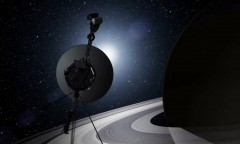
This was a pity, for even with Voyager 1’s 1970s technology, significant advances could have been made in humanity’s knowledge of Pluto. Certainly, the spacecraft might have conducted mapping of both Pluto and Charon and would likely have detected the quartet of tiny moons—Nix, Hydra, Kerberos, and Styx—during closest approach. “Voyager 1 would have brought a magnetometer and a more diverse array of space plasma instruments to bear on Pluto than we will,” explained New Horizons Principal Investigator (PI) Dr. Alan Stern in a historical overview paper. “But it’s more important that New Horizons has much more advanced mapping cameras and a far more capable radio science experiment to determine atmospheric pressure and temperature. We also carry a dust impact detector. Voyager did not have such a device to study Pluto’s environment.”
On the other hand, the small world would have been better positioned in its orbit for imaging by Voyager 1. In the spring of 1986, it would have presented a surface which was oriented equator-on to the Sun, allowing Voyager 1 to fully map it. This was quite different to the high-latitude illumination to be seen by New Horizons, for which much of Pluto’s “winter” hemisphere will be in darkness, but at the same time Voyager 1’s memory storage was far lower than its 2006-launched descendent and the resulting data set would have correspondingly less. In precis, a Voyager 1 flyby would have produced—in the words of Dr. Stern—“many spectacular discoveries, but with less data-depth and diversity than New Horizons is likely to achieve.”
Of course, as we now know, a Voyager 1 encounter with Pluto never garnered significant support in the late 1970s. “Owing in part to the lower risk of the Titan flyby than a long cruise to Pluto, and also the higher scientific priority at the time of Titan, the Pluto option was not exercised” as a Voyager 1 objective, Dr. Stern noted. “Of course, at the time this decision was made, Pluto’s atmosphere, small satellites, complex surface composition and the entire Kuiper Belt all remained undiscovered. By the time of the 1989 Voyager 2 flyby of Pluto-analog Triton, Pluto’s richness and context was beginning to be understood. This, combined with the fascinating results of Voyager 2’s Triton flyby that included a pathologically young surface, active geysers and an atmosphere, motivated interest … to successfully appeal to NASA in 1989 to begin Pluto mission studies.”
Following Voyager 2’s spectacular encounter with Neptune in August 1989, and subsequent ground-based observations of Pluto, the possibility of a mission to the Solar System’s outermost planet gained significant support. “The first such study (eventually dubbed ‘Pluto-350’) was undertaken as a part of the Discovery Program Science Working Group (DPSWG) in 1989-1990,” Dr. Stern explained. “The concept for this study was to send a ‘minimalist’ scientific payload to Pluto-Charon; the Kuiper Belt was then undiscovered and not a part of the mission study. The resulting spacecraft … was a 770-pound (350-kg) vehicle with four instruments (imager, UV spectrometer, radio science, and a plasma package). At the time of this study, a four-instrument spacecraft weighing half of what Voyager did was considered controversial, both in terms of its small scope and its perceived high risk.”
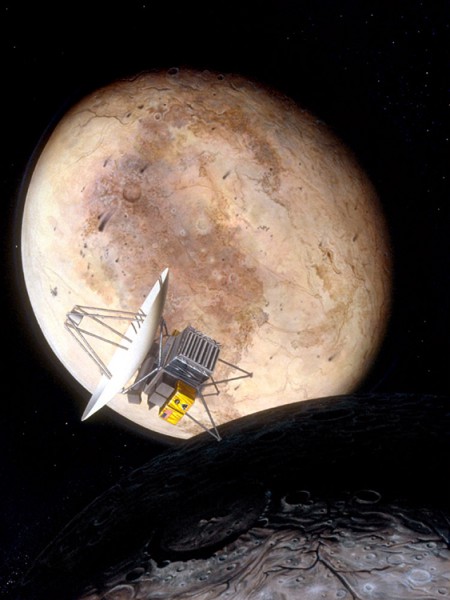
Hard on the heels of Dr. Stern’s Pluto-350 study, a far larger Cassini-class mission of Mariner Mark II spacecraft design began to be explored in more depth, leading to a radical (and smaller) concept of Pluto Fast Flyby (PFF) in the late spring of 1992. Weighing just 77-110 pounds (35-50 kg), and laden with 15 pounds (7 kg) of scientific payload, PFF was entirely in keeping with NASA Administrator Dan Goldin’s “faster, better, cheaper” philosophy and sought to deliver a pair of identical spacecraft to Pluto, with a cap of $500 million. Launched atop a Titan IV/Centaur booster, the lightweight PFF twins—both powered by plutonium-fed Radioisotope Thermoelectric Generator (RTGs)—would have utilized a Jupiter Gravity Assist (JGA) and could have reached Pluto in as little as 7-8 years, as opposed to the 12-15 years as envisaged in the Pluto-350 and Mariner Mark II concepts.
In August 1992, Dr. Robert Staehle of NASA’s Jet Propulsion Laboratory (JPL) in Pasadena, Calif., telephoned Clyde Tombaugh to request permission to visit “his” planet. “I told him he was welcome to it,” Tombaugh later reflected, “though he’s got to go one long, cold trip!” By the fall of 1993, planning efforts were well underway for the PFF mission, to be launched in 2000 and encounter the planet and Charon no later than 2010. Laden with four scientific instruments—a visible camera, infrared and ultraviolet spectrometers, and a radio science instrument—the decision was made to utilize twin spacecraft because Pluto required 6.4 Earth-days to full rotate on its axis. The enormous velocity of the approach would have allowed high-resolution imaging of a part of Pluto’s south polar region and a small fraction of the north polar region with a single spacecraft, which made a duo more appropriate.
Unfortunately, insufficient funding and spacecraft mass-growth proved PFF’s downfall. Over time, this mass-growth escalated the flight system to the 310-pound (140-kg) class, “with no increase in mission payload mass,” according to Dr. Stern. “A second issue involved cost increases, largely due to a broad move within NASA to include launch vehicle costs in mission cost estimates. Since two Titan IV launchers alone cost over $800 million, this pushed PFF to well over $1 billion.” Then, in August 1993, contact with the Mars Observer spacecraft was lost, shortly before entry into orbit around the Red Planet. “These events began to sour then-NASA Administrator Goldin on PFF,” wrote Dr. Stern. “Cost concerns subsequently caused the PFF concept to be cut back to one spacecraft.”
Then came an unusual turn of events. As chair of NASA’s Outer Planets Science Working Group (OPSWG), formed in 1991, Dr. Stern attempted to court European and Russian co-operation in PFF, in order to draw down costs. “European interest was generally lukewarm,” he wrote. “However, Russian interest was stronger. A concept emerged between Stern and Russia’s director A. Galeev of the IKI space research center in Moscow that a Russian Proton launch vehicle would loft PFF, saving NASA the $400 million cost of the Titan IV launch. In it for Russia would be a probe, called a ‘Drop Zond’, which would enter Pluto’s atmosphere to make measurements of it and imagery, before an impact on Pluto.
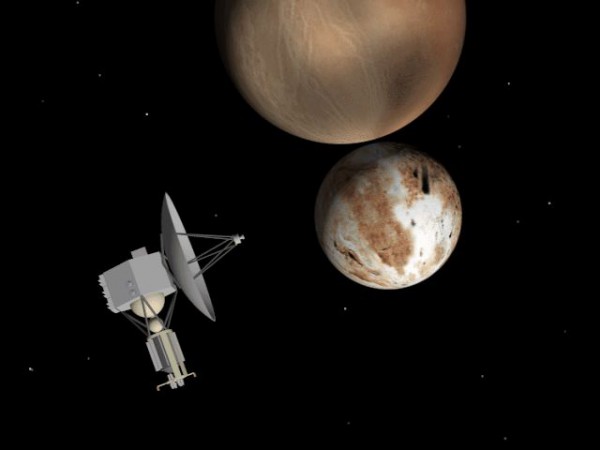
“When Russia later (1995) demanded to be paid for this launch, Germany’s Max Plank Institute for Planetary Physics offered to pursue German national funding for the Russian launch,” continued Dr. Stern in his historical overview. “The plan of the German scientists was to pay Russia for the Proton launch ($30 million at that time) in exchange for NASA accommodating a second probe on PFF which would impact Jupiter’s moon Io during the JGA encounter. PFF was never started into development owing to higher priorities within NASA for then Administrator Goldin.”
However, the discovery of the Kuiper Belt in the early to mid-1990s led to a rapid widening of interest in this dark, distant region of the Solar System and JPL was directed to “reinvent” PFF as the Pluto Kuiper Express (PKE). The latter would have taken the form of a single 385-pound (175-kg) spacecraft, laden with 20 pounds (9 kg) of scientific instrumentation, and launched at some point within the 2001-2006 JGA “window.” A Science Definition Team was formed in 1995, delivered its report the following year and was anticipated to press ahead with instrument selections in 1997, but PKE mission studies were drastically cut back by Goldin and the latter selection did not take place. “By 1999, however, NASA did release a solicitation for PKE instruments,” Dr. Stern reflected. “Proposals were due in March 2000. Many of the proposals received resulted from the PFF miniaturized instrument development program. These proposals were evaluated and ranked, but never selected.” It was expected that PKE would have carried much of the old PFF’s instruments, together with an Ultrastable Oscillator (USO) for radio occultation experiments.
By this stage, it was becoming increasingly apparent that PKE would not fly before December 2004, likely atop a Delta IV booster. After passing Jupiter in April-June 2006, its whistlestop tour of the Plutonian system in December 2012 would have seen it pass the tiny planet at a distance of about 9,000 miles (15,000 km), traveling at a relative velocity of 38,000 mph (61,200 km/h) and achieving an imaging resolution as fine as 0.6 miles (1 km). Major scientific objectives would have included the characterization of the global geology and geomorphology of the Pluto-Charon system, as well as the mapping of surface composition and determination of the tenuous atmosphere. After closest approach, PKE would have been redirected onto a subsequent mission to explore one or more icy Kuiper Belt objects at the “ragged edge” of the Solar System. However, in September 2000, “unacceptably large cost increases” on PKE forced NASA to direct JPL to terminate work on the mission. Several weeks later, in October, Goldin transferred $100 million from the $250 million annual Outer Planets (OP) exploration program over to the Mars exploration effort.
“This move infuriated many planetary scientists because…Pluto is virtually unique in being a scientific subject that won’t wait,” noted Space Daily in December 2000. “Having just passed perihelion, it is moving further from the Sun in its lopsided orbit. And on top of that, Pluto’s spin axis is tilted fully 60 degrees, so like Uranus, it ‘lies on its side’—and, by chance, at perihelion, it is almost side-on toward the Sun. Currently, one of its poles is gradually tilting further and further away from the Sun and so an increasing surface area around that pole is being cast into permanent night-time shadow. This means that more and more of its surface area will be unavailable for a probe to photograph and that the cold night-time pole provides a growing patch of super-cold surface for the atmosphere to freeze out as a polar cap and accelerating the rate at which Pluto’s atmosphere disappears.” The Division of Planetary Science of the American Astronomical Society (AAS) added that, aside from the fact that Pluto had not yet been explored by a spacecraft, “the opportunity to study the tenuous … atmosphere may be lost for centuries.”

It was an intensely disappointing blow, but by no means reflected the end of plans to send a robotic mission to Pluto, the importance of which was unquestioned in the scientific community. “We must go there,” stressed the Solar System Exploration Subcommittee (SSEC) in an October 2000 letter to Dr. Ed Weiler, NASA’s Associate Administrator for Space Science at the agency’s Washington, D.C., headquarters. “The information needed is mostly unobtainable from telescopic observations, even allowing for future improvements. Though small, Pluto has an atmosphere and is expected to have internal dynamic processes. The Pluto-Charon binary planet system has no other Solar System analog in its tidal evolution, except possibly Earth and our companion, the Moon. From our perspective, close in to the Sun, this is a mission to the frontier of the Solar System, an appealing aspect to both scientists and the public.”
At length, in December 2000, NASA opened up a request for proposals for a flyby, whose cost was capped at $500 million. Following the closing date in March 2001, a planned “downselect” of proposals was initiated, leading to the selection of two finalists in the summer. Although there was no restriction on the launch date, it was considered desirable to reach Pluto by 2015, during the period at which its atmosphere was expected to freeze-out as the planet traveled farther from the Sun. In June 2001, NASA selected two proposals from a pool of five responses to the Announcement of Opportunity for the so-called “Pluto-Kuiper Belt” (PKB) mission. “The President’s FY 2002 budget request does not contain development funding for a Pluto mission,” NASA explained. “The Congress requested that NASA not do anything precipitous which would preclude the ability to develop a Pluto-Kuiper mission until the Congress could consider it in the context of the FY 2002 budget.” It was noted that, if accepted and developed, launch of the PKB mission would occur in the 2004-2006 timeframe, permitting an arrival at Pluto “before 2020.”
Two mission proposals—the Pluto and Outer Solar System Explorer (POSSE), headed by Dr. Larry Esposito of the University of Colorado at Boulder, and New Horizons: Shedding Light on Frontier Worlds, led by Dr. Alan Stern of Southwest Research Institute (SwRI) Space Studies Dept. in Boulder, Colo.—were each granted $450,000 for a three-month concept study. “Both proposals are for complete missions, including launch vehicle, spacecraft and science instrument payload,” it was stressed. “Both address the major science objectives defined in the original announcement. Each proposal includes a remote sensing package that includes imaging instruments, a radio science investigation and other experiments to characterize the global geology and morphology of Pluto and Charon, map their surface composition and characterize Pluto’s neutral atmosphere and its escape rate.”
Finally, in November 2001, NASA selected New Horizons for a Phase B Preliminary Design Study, the conditions of which required passage through a confirmation review to address significant risks of schedule and technical milestones and regulatory approval for launch of the spacecraft’s nuclear power source, together with the availability of funding. “Congress provided $30 million in FY 2002 to initiate PKB spacecraft and science instrument development and launch vehicle procurement,” NASA explained. “However, no funding for subsequent years is included in the Administration’s budget plan.” In acknowledging the selection of New Horizons, Dr. Ed Weiler pointed out that both proposals were outstanding, but Dr. Stern’s mission “represented the best science at Pluto and the Kuiper Belt, as well as the best plan to bring the spacecraft to the launch pad on time and within budget.”
In July 2003, the Atlas V launch vehicle—flying in its most powerful configuration, the “551,” equipped with a 16-foot-diameter (5-meter) Payload Fairing (PLF), five strap-on rocket boosters, and a single-engine Centaur upper stage—was selected to deliver New Horizons into space during a “window” which extended from mid-January through mid-February 2006. In doing so, the booster would inject the spacecraft onto an Earth-escape and solar-escape trajectory and would yield the fastest departure velocity ever accomplished by a human-made machine from the Home Planet. Launching during the first half of this window, before 3 February, would also permit a Jupiter Gravity Assist (JGA) in early 2007, and the enormous gravitational impetus imparted by the Solar System’s largest planet would shave about five years off the journey time, permitting a Pluto arrival in July 2015.
“Visiting Pluto and other Kuiper Belt objects would be like visiting a deep freeze, containing samples of the most ancient material in our Solar System, the stuff that all the other planets, including Earth, were made of,” said Dr. Colleen Hartman, Solar System Exploration Director at NASA’s Office of Space Science, “but the most exciting part about going to an unexplored planet is what we may find there that we’re not expecting.” Clearly, an exciting road lay ahead. Yet it was a road which would bring great trials and tribulations for New Horizons itself, to say nothing of Pluto itself, whose role in the Solar System—and in our popular consciousness—would change markedly in the opening decade of the 21st century.
This series will continue next weekend, as AmericaSpace traces the history of the New Horizons mission, through its launch and long journey across the Solar System to reach Pluto.
Stay with AmericaSpace for regular updates and LIVE COVERAGE of New Horizons’ approach and flyby of the Pluto system.
Missions » New Horizons »



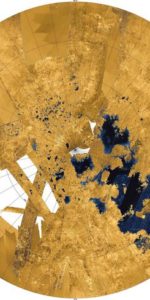
Reach with your arms and grab your toe and hold this position as long as it’s comfortable.
Workout produces both norepinephrine and serotonin, 2
chemicals that enhance your overall state of mind and general sense of well-being.
In this case, the objective would be climbing up
the hill.